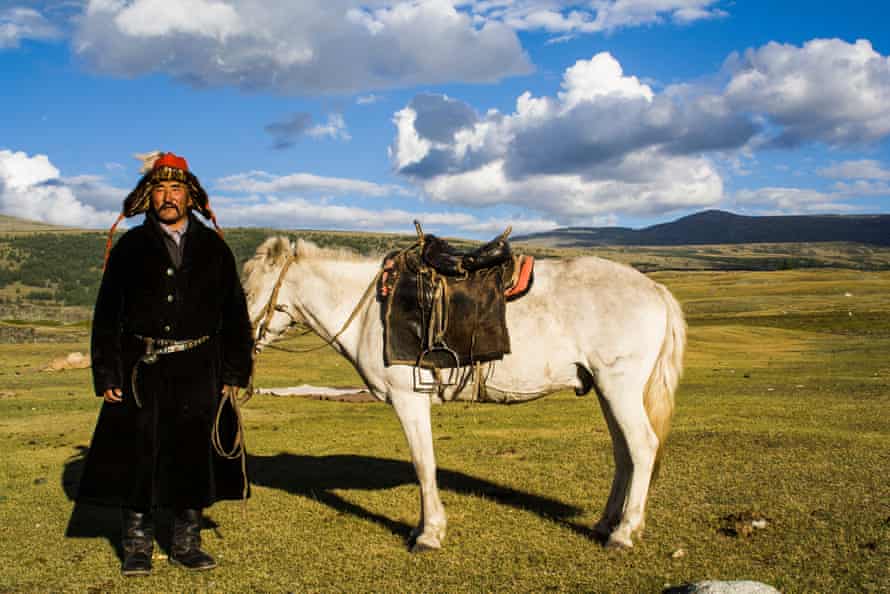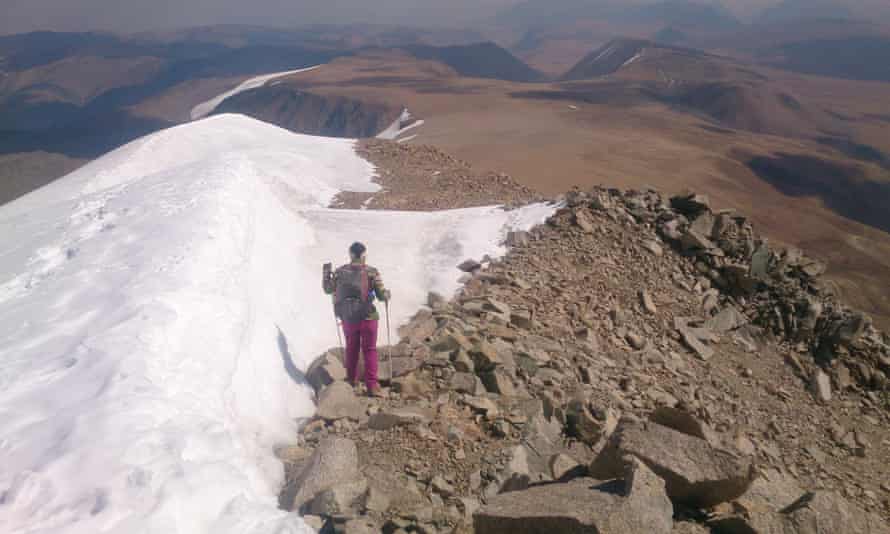Iain Sinclair’s phrase, “space expresses itself through the person you choose as a guide”, was in my mind as I stepped off the train in Ulaanbaatar. I’d never travelled with a tour guide but was about to spend two months hiking with someone I’d never met.
It was clear on meeting Oyunaa, however, that she was not your average guide. She had just turned 20 and had an infectious love for her country. For my part, I had wanted to visit Mongolia for as long as I could remember and was beyond excited to be there.
I arrived in mid-summer – for a two-month trip – with everything on the steppe blooming in a riot of colour. Summers are short in Mongolia, ending in late August; then the winter plunges this vast country back towards -30C. Such extremes of distance and temperature mean there isn’t much infrastructure, so a local tour company helped us shape a loose itinerary, with a driver to drop us in remote spots in the countryside.
Before heading out, Oyunaa provided a tour of her home city – the complex modern capital – beginning with a tongue-in-cheek lesson in how to cross its chaotic roads. Her mantra, as she sauntered through traffic, was: “I’m here, I’m here, I’m here …” Never rush, she said, the drivers will swerve.

Like many urban Mongolians, Oyunaa spent school holidays in the countryside with her grandparents, soaking up their nomadic traditions. So the idea of seasonal migration was second nature. But long-distance walking for pleasure was not, and on our first day of hiking she started out in flip-flops, with a bag of makeup slung over her shoulder.
Walking with her was a joy. My diary is peppered with her observations: Oyunaa says … the three beauties are Mountain, Desert and Steppe. Oyunaa says … I must tell you the story of the old ibex, the one that stands on top of the mountain. Oyunaa says … I mustn’t sit cross-legged in the eagle hunter’s ger.
The horizon seems endless in central Mongolia, one soft-browed hill folding into another. I would think we were miles from any settlement, only for a family to come bouncing over the hill on a single motorbike. Oyunaa was greeted with affection by everyone we met.
We walked ridges in the Orkhon valley, looking out over ancient tombs; sheep thrown across the steppe like a game of shagai (literally ankle bones); the river looping away towards a waterfall. One day, while sitting under a tarpaulin, we heard the eerie sound of camels in the distance, and Oyunaa told me stories – she talked of jumping off a balcony as a child, with an open umbrella to break her fall; of roping herself to her sister so she could climb out through a window. She hated being indoors.

She could both ride and milk a horse, and she gave me my first (and last) taste of fermented mare’s milk. She despaired that I didn’t love it and that I wouldn’t try her boil-in-the-bag horsemeat. But she was patient with my vegetarianism in this pragmatic land of mutton and more mutton, which she insisted was “the best meat in the world”.
Our last hike was through Altai Tavan Bogd national park to Malchin Uul, a sacred mountain. Tavan Bogd means Five Saints and refers to the highest peaks there: a tantalising curtain of rock behind the huge and graceful Potanin glacier, on the border with Russia and China. At 4,050 metres, Malchin is the baby of the five; the only one that can be climbed without specialist equipment, its bewitching curves covered in scree from the fracturing of the weather.
Traditionally in Mongolia, mountain guides are male but as our trip progressed Oyunaa became determined to climb. Especially when told by guides we met along the way that the mountain didn’t want her because she was a girl; that she would bring bad luck. Oyunaa was having none of it.

We needed to cover 180km in 10 days, which would be tough over difficult terrain. It was September and the scrub birch on the mountains was already turning red, the larch beginning to yellow. The window for climbing Malchin was closing. If the weather didn’t hold, base camp would be unreachable. As we gained altitude, we passed through hidden valleys threaded by turquoise rivers. We could see snow. Oyunaa was increasingly focused, but beginning to feel the slow burn of long days walking. She was tired, we both were. On the precipitous ascent to an exposed mountain pass called Sacrifice to the Sky, I turned to find Oyunaa prostrate on the path. I thought she’d fallen, but she was “having a little rest”.
The mountain passes in Mongolia are dotted with cairns strewn with sky-blue prayer scarves. Every one we passed, we circled three times clockwise for a safe journey. By the time we reached Malchin I had made a hard decision: I was too tired to make the final climb.
Oyunaa though … maybe it was the horsemeat, but next morning she was up there like a shot. Sure-footed and strong, like the ibex of her story. During the eight hours it took her, I had the best shower ever, improvised out of a washing-up bowl and a pan of hot water; I cooked noodles for horsemen and chased marmots out of the food tent. But mostly I kept my binoculars trained on Malchin. Whenever I think of Oyunaa, I picture her on the summit saying: I’m here, I’m here, I’m here …
a handful of string (poems from Mongolia) by Ruth Wiggins is published by Paekakariki Press (£12.50)





